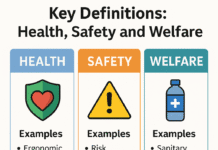
Heat Stress Examples
Heat stress is a condition that occurs when the body is unable to regulate its internal temperature due to exposure to high temperatures and humidity levels, leading to various physiological and psychological effects. It is crucial to recognize the signs of heat stress and take preventive measures to mitigate its impact, especially in environments where individuals are more susceptible to its effects.
Introduction to Heat Stress
Heat stress is a serious concern in many industries and activities, particularly those that involve working outdoors or in hot environments for extended periods. It occurs when the body’s natural cooling mechanisms, such as sweating, are unable to dissipate heat efficiently, resulting in a rise in core body temperature.
Understanding heat stress is essential not only for individuals working in high-temperature environments but also for athletes, emergency responders, and anyone exposed to extreme heat conditions.
Common Causes of Heat Stress
Several factors contribute to the development of heat stress, including environmental, occupational, and physiological factors. High temperatures, humidity levels, and lack of air circulation are environmental factors that can exacerbate heat stress. Occupational factors such as heavy physical exertion, wearing protective clothing, and working in confined spaces can also increase the risk of heat-related illnesses.
Additionally, individual characteristics such as age, fitness level, and medical conditions can affect how the body responds to heat stress.
Effects of Heat Stress on the Body
Heat stress can have profound effects on both physical and mental health. Physically, it can lead to heat cramps, heat exhaustion, and heat stroke, which can be life-threatening if not promptly treated. Mentally, heat stress can impair cognitive function, leading to confusion, irritability, and decreased alertness.
Examples of Heat Stress in Different Settings
Workplace Examples
In industrial settings such as construction sites, factories, and agricultural fields, workers are often exposed to high temperatures and physical exertion, increasing their risk of heat stress. For example, construction workers performing tasks such as roofing or paving may experience heat stress during the summer months.
Athletic Examples
Athletes who train or compete in hot and humid conditions are also susceptible to heat stress. Marathon runners, football players, and tennis players are at risk of dehydration and heat-related illnesses if proper precautions are not taken.
Environmental Examples
Extreme heat events, such as heatwaves and prolonged periods of hot weather, can affect entire communities and regions. Vulnerable populations, including the elderly, children, and individuals with pre-existing health conditions, are particularly at risk during these events.
Preventive Measures for Heat Stress
To prevent heat stress, individuals should take proactive measures to stay cool and hydrated, especially during hot weather or when working in high-temperature environments. Hydration, wearing lightweight and breathable clothing, and taking frequent breaks in shaded or air-conditioned areas are essential strategies for reducing the risk of heat-related illnesses.
Heat Stress Management Strategies
Training and Education
Employers should provide training and education on heat stress awareness and prevention to their employees. This includes recognizing the signs and symptoms of heat-related illnesses, understanding the importance of hydration and rest breaks, and knowing when to seek medical attention.
Monitoring and Assessment
Regular monitoring of environmental conditions, such as temperature and humidity levels, can help identify areas where heat stress may be a concern. Employers should also conduct risk assessments to evaluate potential hazards and implement control measures to mitigate the risks associated with heat stress.
Emergency Response Plans
Having an emergency response plan in place is crucial for effectively managing heat-related emergencies. This includes establishing protocols for responding to heat-related illnesses, providing first aid training to designated personnel, and ensuring access to medical assistance if needed.
Regulatory Frameworks and Guidelines
Occupational Safety and Health Administration (OSHA) Regulations
OSHA provides guidelines and regulations aimed at protecting workers from heat-related hazards in various industries. Employers are required to provide a safe working environment and implement measures to prevent heat stress, including providing access to water, rest breaks, and shade.
International Standards
Several international organizations, such as the World Health Organization (WHO) and the International Labour Organization (ILO), have developed standards and recommendations for managing heat stress in the workplace and other settings. These guidelines serve as valuable resources for employers and policymakers seeking to address heat-related risks.
Heat Stress and Climate Change
Impact of Climate Change on Heat Stress
As global temperatures continue to rise due to climate change, the frequency and intensity of heatwaves are expected to increase, exacerbating the risk of heat stress for populations around the world. Vulnerable communities, particularly those in low-income countries and coastal regions, are likely to be disproportionately affected by heat-related illnesses and deaths.
Mitigation Strategies
Mitigating the impact of heat stress requires a multi-faceted approach that addresses both adaptation and mitigation measures. This includes investing in infrastructure to improve access to cooling centers, implementing urban planning strategies to reduce the urban heat island effect, and reducing greenhouse gas emissions to mitigate the long-term impacts of climate change.
Conclusion
Heat stress poses a significant risk to public health and safety, particularly in the face of rising global temperatures and more frequent extreme heat events. By understanding the causes and effects of heat stress, implementing preventive measures, and adopting effective management strategies, individuals, employers, and policymakers can work together to reduce the burden of heat-related illnesses and create safer and more resilient communities.
FAQs
- What are the early signs of heat stress? Early signs of heat stress include excessive sweating, fatigue, dizziness, and headache. If left untreated, heat stress can progress to more serious conditions such as heat exhaustion and heat stroke.
- How can employers prevent heat stress in the workplace? Employers can prevent heat stress in the workplace by providing access to water, rest breaks, and shade, implementing engineering controls such as ventilation and air conditioning, and training employees on heat stress awareness and prevention.
- Are certain demographics more susceptible to heat stress? Yes, certain demographics, such as the elderly, children, pregnant women, and individuals with pre-existing health conditions, are more susceptible to heat stress due to factors such as reduced thermoregulatory capacity and limited mobility.
- Can heat stress lead to long-term health problems? Yes, repeated exposure to heat stress can have long-term health effects, including kidney damage, cardiovascular disease, and heat-related cognitive impairment.
- How does humidity affect heat stress? High humidity levels can exacerbate heat stress by reducing the body’s ability to cool itself through sweating. In humid conditions, sweat evaporates more slowly, making it harder for the body to dissipate heat effectively.
























